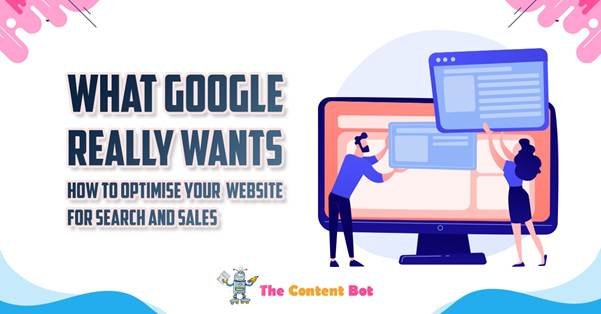
Google SEO Strategy 2025 : to the top of Google isn’t just about stuffing your site with keywords anymore. The game has changed and it’s all about offering real value. Google’s algorithm now favors content that’s genuinely helpful, websites that load fast, and brands people can trust.
If your website isn’t designed with both search intent and user experience in mind, you’re not just missing out on traffic but also on leads and revenue.
Here, we’ll guide you through what Google’s actually looking for in 2025, how to optimize your SEO strategy with your business objectives, and how to get the right kind of traffic that actually converts. Let’s break it down.
1. Google Requires Relevance So Begin with Purpose
Google’s biggest fear is to bring the user as close to the most relevant results as they can. That is, your sites must be based on what your folks are actually searching for not what you want to sell them. That begins with search intent keyword research: informational, navigational, and transactional. Your sites must hit squarely on what humans are typing into the search box.
Key Insight: If whatever you are publishing corresponds to genuine user intent, then you rank and convert.
2. Your Site Must Be Technically Sound
Regardless of how good your copy is, if your site is slow, poorly optimized, it’s not going to rank. Page speed, mobile usability, secure links (HTTPS), and clean code are all technical qualities that Google values too. That one small little error such as a broken link or an un-compressed image will be killing your SEO credibility as much as it’s going to drive your potential customers mad.
Key Insight: A technically perfect spot isn’t good for Google alone—It creates a more enjoyable browsing experience that retains users on the page.

3. Quality Of Content Is King
Google likes pages that have well-written, high-quality, original content. Quality is not facts and grammar depth, clarity, and value. Your site must provide solutions, with copy that informs, convinces, and converts. Product explainers, FAQs, buyer guides, and long-form blog posts are just a few examples all designed to aid in the decision.
Key Insight: Problem-solving content rewards with better rankings and increased sales.
4. Google Observes Engagement, Not Clicks
The second that your visitor clicks your page, Google is waiting to see what they do. Do they read on and take away something? Or bounce off in less than 10 seconds? Click-throughs such as user behaviour, bounce rate, time on page, and clicks inform Google whether your page is delivering on its promise. The more quality and helpful your page is, the longer it will continue ranking.
Key Insight: SEO is not click-based but consideration-based post-click.
5. Credibility and Trust Don’t Negotiate
Google likes to trust sources, particularly when it comes to health, money, or safety content. Building authority is to acquire links from authoritative domains, demonstrate social proof (i.e., reviews), and transparency via clean contact information, policies, and author bio. If your site’s shady or murky, it won’t rank and convert.
Key Insight: Trust is a ranking signal. And if humans trust your site, Google will also trust it.
How The Content Bot Can Assist
We don’t tinker with algorithms at The Content Bot we purchase them. employ an SEO team, content strategists, and conversion experts who all collaborate with each other to ensure your site isn’t simply search engine optimized for ranking, but constructed to produce actual business results.
We assist brands:
- Do keyword research for intent-based keywords that are what your customers need
- Create information-rich, conversion-based, and SEO-optimized content
- Maximize site speed, mobile-friendliness, and tech SEO
- Build sites and pages to deliver maximum engagement and zero bounce rates
- Build long-term authority through ethical content creation and link building
Your website is your best salesperson. Let’s get it to work smarter not harder.
Frequently Asked Questions
What makes search optimisation different from sales optimisation?
Search optimisation brings them in; sales optimisation turns them into customers. You require both if you value realizing real ROI.
Is SEO still applicable today in 2025?
Yes. But not as you may remember it. Quality content, intent marketing, and good UX over keyword stuffing.
How long before SEO starts to yield results?
Generally, 3–6 months, depending on your niche, competition, and the health of your current site.
Must I optimise my own site?
Yes, but it is more costly in terms of costly blunders and produces faster results.
Real-Life Examples
The Ecommerce Site with No Traffic
One fashion firm had a beautiful site but was listed 5. We rewrote their site structure, optimized category pages, and created decent blog content. Organic traffic doubled and conversion in 4 months.
The Service Business with Horrendous Conversions
There was this one company that was performing well but not closing on leads. We did user behaviour audits, added trust badges and more prominent CTAs, and optimized the landing page. 35% reduction in bounce rate and 60% increase in requests within two months.
The Bootstrapped Startup Landing on a Shoestring
A SaaS business wanted visibility but lacked the budget to market. We constructed their SEO site from scratch—optimized pages, blog strategy, and content internally. Within 6 months, they were ranking for extremely competitive terms and receiving quality leads without pay-per-click advertising.
Final Thoughts
Getting found on Google in 2025 isn’t about gaming the algorithm it’s about aligning with it. That means creating content that solves real problems, building trust with your audience, and delivering seamless user experiences across every page. SEO and sales are no longer separate silos; they work together to attract, engage, and convert your ideal customers.
If you’re serious about growing your business online, now is the time to treat your website like your hardest-working sales rep. Optimize for relevance, performance, and credibility and the rankings (and revenue) will follow.
Your next best lead is already searching. Make sure they find you not your competitor.

